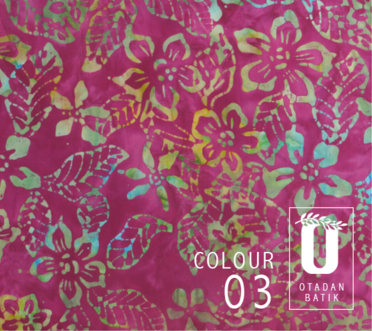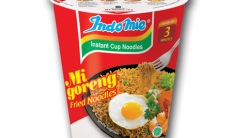Fibre2fashion.com, India
Source: www.textilefabric.com
Fall has fallen, and winter is on its way, yet another season seems to be prominent due to batik springing up everywhere! This ancient printing craft originated in Java, and has been practiced there for centuries.
Batik is generally observed as an indigenous Indonesian (Java) textile, although influences from all corners of the world have enriched its inherently beautiful design. Fashions and furnishings are utilizing batik prints in increasing numbers, causing their industries to acknowledge the beauty and artistry of this brilliant 2,000 year-old tradition.
Batik prints are generally composed of flower motifs, twinning plants, leaves and buds, birds, butterflies, fish, geometric forms and patterns, small animals and insects. The innovations in batik patterns are endless, as there are nearly 3,000 varieties on record. The word “batik” is in Indonesian in origin, and occurs as “ambatik” in Javanese; it means “drawing” and “writing.” These two words describe what it means to print batik: to draw patterns and designs free hand with hot wax, followed by painting between the waxed sections. Then the fabric is re-waxed, cloth dyed, and boiled.
Batik Technique
Performing the batik technique can be done in a factory for mass production, or in smaller quantities per yard; this is done by hand, which is the traditional way to batik print. The factory method was put in place.1850 in order to compete with a burgeoning European fashion market. This method uses a metal stamp, called a “cap,” to apply the hot wax; the stamp is heated, dipped in the hot wax, and the surface of the cap is then pressed on to the cloth. The traditional method, done by hand, utilizes a wooden, pen-like “canting” filled with the hot, liquid wax that is drawn on to the fabric’s surface.
The next steps are the same regardless of the beginning method. The newly waxed cloth must be laid out on a table to be painted. Colors are brushed between the wax lines to complete the designs. Then the colored areas are re-waxed in black so the background dyes do not penetrate the new pattern.
The fashion and upholstery industries are utilizing batik patterns now more than ever. They’re popping up all over the runways, shopping centers, and furniture showrooms. The urban fashion industry is embracing the tradition by manufacturing sarongs, scarves, dresses, jackets, and accessories for the ready-to-wear market. This facet of the industry focuses on the West African, Middle Eastern, and Native American batik tradition. These cultures influenced mainstream batik printing, as well as inventing new styles.The Middle Eastern population often favored the patterns that were based on the patola designs from India, as well as designs that featured the color green. Historically, green was a sacred color in the Muslim faith. The introduction of Islam to this area also affected batik printing in that the Islamic faith forbade the depiction of life-like pictures; this prompted the use of stylized patterns without representation of human or animal forms. They generally printed their batik designs on cotton, voile, or silk, much like the traditional batik printing is done.
West African and Native American batik prints often depict the activities of people interacting in daily life. The patterns show people grinding corn, carrying water or firewood, braiding hair, dancing in ceremonies, praying for rain, or showing caricatures of emotions. Many of their batik patterns are printed on Kente cloth or mudcloth, cotton, or voile. These cultures brought the use of new fabrics to the forefront of the batik revolution.
The Middle Eastern, West African, and Native American cultures popularized these traditional patterns through clothing beginning in the late 1960’s. The upholstery and furnishings industry became familiar with the batik tradition much earlier, yet prominence did not come until the early 1950’s; its popularity has yet to decrease. Several different cultures have influenced the patterns and designs of this facet of the industry.
The Chinese contributed to the batik design are most evident in the addition of more flower and bird motifs, border patterns, and incorporating the use of pinks, yellows, and blues. Dutch and Eurasian women have favored the use of European floral bouquets, birds, bees, trees and butterflies in their patterns, a trend that is one of the most popular in use today. All three cultures influenced the design and color combinations so heavily, that batik is often associated with their influential characteristics.
Batik prints are so common in our society today, that it’s hard to imagine a life without their beauty. Batik prints are in our art, on our loveseats, and in our wardrobe. They’re hanging over our bay windows, and adorning our walls with their elegance. Batik printing, patterns and designs have enriched many facets of an artistic heritage that encompasses many regions of the world.
A tradition that started on a small island 2,000 years ago has evolved into a world-renowned practice. Fashions and furnishings helped bring the beauty of this tradition to world wide prominence. Batik apparel was formerly the clothing of aristocracy; batik is now the art of the world.
Source:
Harris, Jennifer. Textiles 5,000 Years: An International History and Illustrated Survey;
Harry N. Abrams, Inc., Publishers.Pp. 161-165.
To read more articles on Textile, Industry, Technical Textile, Dyes & Chemicals, Machinery, Fashion, Apparel, Technology, Retail, Leather, Footwear & Jewellery, Software and General please visit http://articles.fibre2fashion.com
To promote your company, product and services via promotional article, follow this link: http://www.fibre2fashion.com/services/article-writing-service/content-promotion-services.asp





